All ducks might quack the same way, but they are certainly built differently. They have different types of feathers, feather colors, sizes, beak types, and even beak colors to make them stand out from one another in unique ways.
Ducks are birds that come from the Anatidae family, and each genus and species having various distinctive features.
Beaks are one of the distinguishing features for different duck breeds. In this article, we’ll explore and compare ducks, geese, and swans that all have one main thing in common: red beaks.
Table of Contents
Red-Billed Ducks
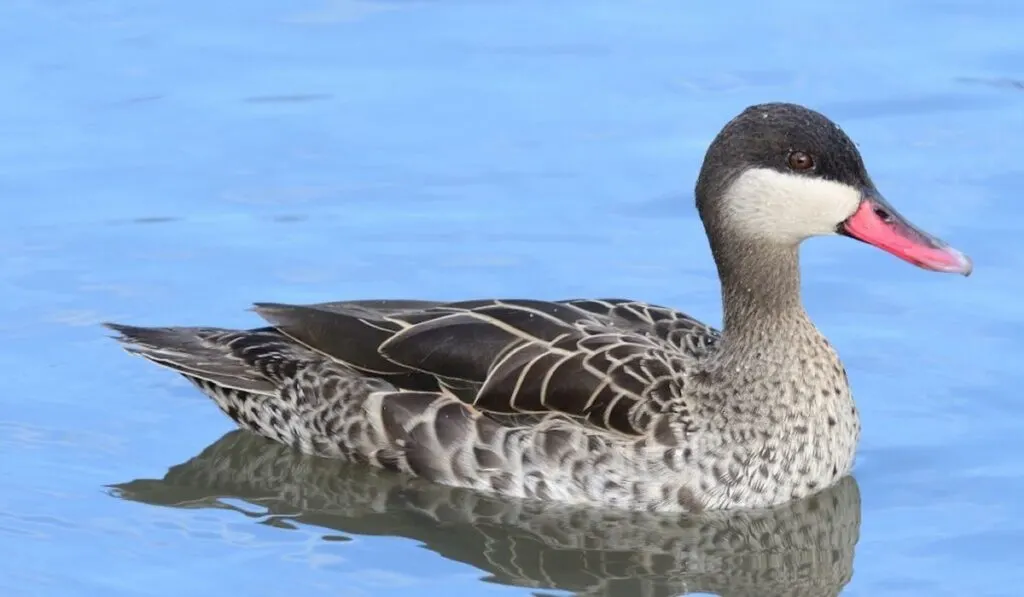
The red-billed duck is a small-sized duck with a unique pinkish-red bill that has a dark saddle. It has a plumage patterned with white and brown feathers.
The plumage in the back region has a high density of brown feathers, while those in the breast area have more white feathers.
The plumage on the upper part of the red-billed duck’s head is chocolate-brown, and it forms a cap-like region. The cheeks region is, however, white.
Red-billed ducks usually feed around open freshwater. Their diet consists mainly of plants and seeds.
King Eiders

King eiders are large sea ducks commonly found in the Arctic Ocean and waters in the cold regions of the northern hemisphere pole. These birds forage on sea beds running as deep as 80 ft.
While male king eiders are highly decorated, the females are much more plain in appearance. Males have orange and red bills, black and white plumages, green cheeks, and a blue crown.
In contrast, females have black and brown patterned plumage with a black bill.
King eiders are migratory birds; they fly south during winter and north in summer. King eiders fly regardless of thick fog, daylight, and darkness, and they can fly at speeds around 40 mph.
Muscovy Ducks
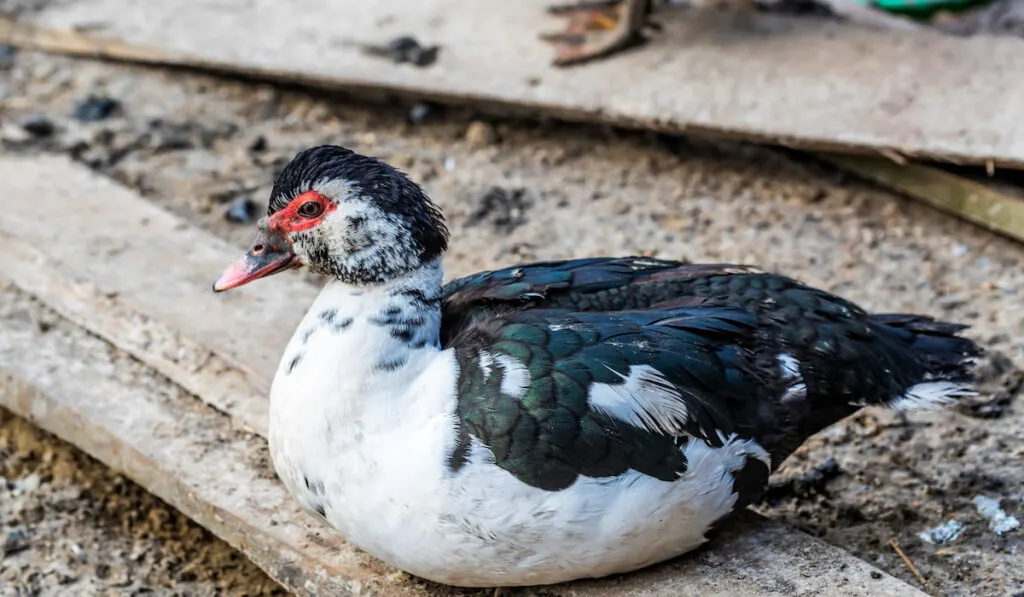
The warty-faced Muscovy ducks are one of the oldest domesticated fowls in the world. They are commonly found in south Texas, and some wild ones also live in Florida.
Their name, Muscovy, may have come from the Muscovy Company, which was one of the main transporters of the ducks from England to France.
Muscovy ducks have different bill colors; some have red bills, some have black bills, and some have black bills with white spots.
Adult female Muscovy ducks are large birds with long necks and black plumage with white patches. They commonly live in forests inside tree cavities.
Adult male Muscovy ducks are also large with wart-like bumps on their faces. They have black-and-green plumage with white patches.
Mandarin Ducks
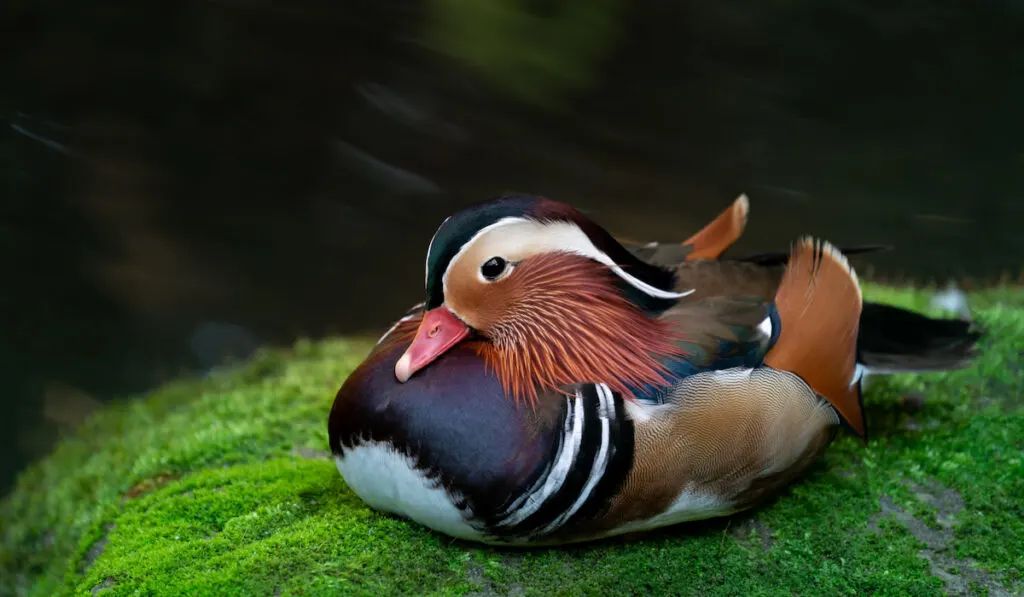
The mandarin duck, which is native to Japan and China, is perhaps the world’s most beautiful duck. It has quite an attractive plumage, and this makes it common in art and culture.
When molting, mandarin drakes and ducks have similar plumage. But the red bill of the drakes distinct them from their female counterparts.
These birds are great fliers; they are very maneuverable when in flight with a great ability to glide through trees.
You’ll find mandarin ducks around small water bodies like small-wooded ponds. But you’ll rarely find them around large bodies of water like lakes.
You also commonly find them perching on trees. Many times, female mandarins lay their eggs in holes inside a tree trunk.
These birds, alongside the Northern American wood duck, belong to the Aix genus. Remarkably, these two species have no recorded hybrids.
Brazilian Teals
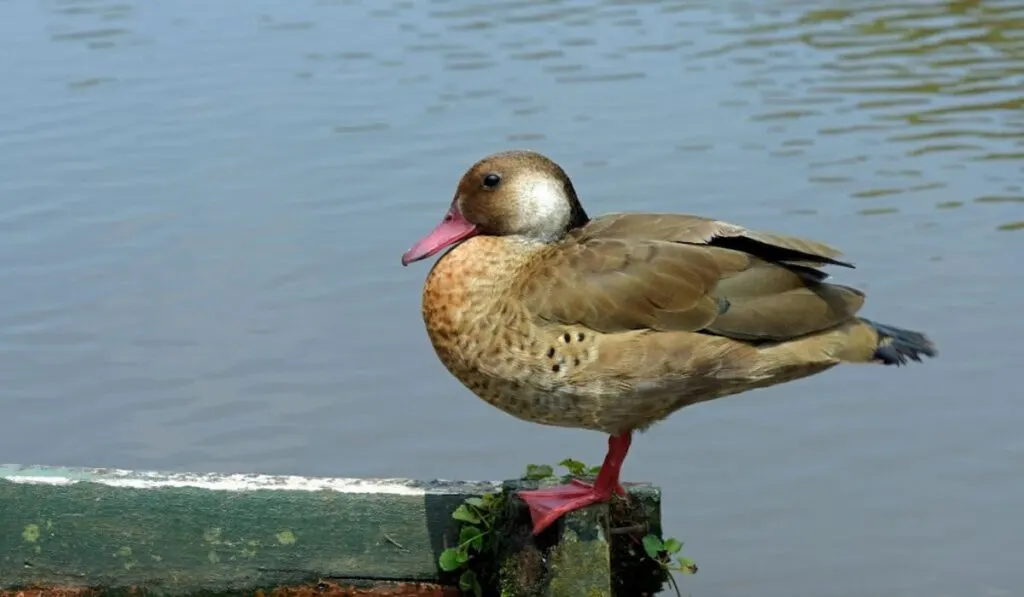
Brazilian teals are a small and uncommon duck species native to South America. Both male and female Brazilian teals have similar body structures.
However, one main difference between them is the color of their bills: the females have blue-grey bills while the males have red bills.
When their wings are lowered, their plumage is largely brown with some white and black spots. But when in flight, their dark green outer wing is revealed.
You will find Brazilian teals around lakes, marsh, ponds, and rivers. Sometimes, you may also find them around salty water bodies.
Wood Ducks
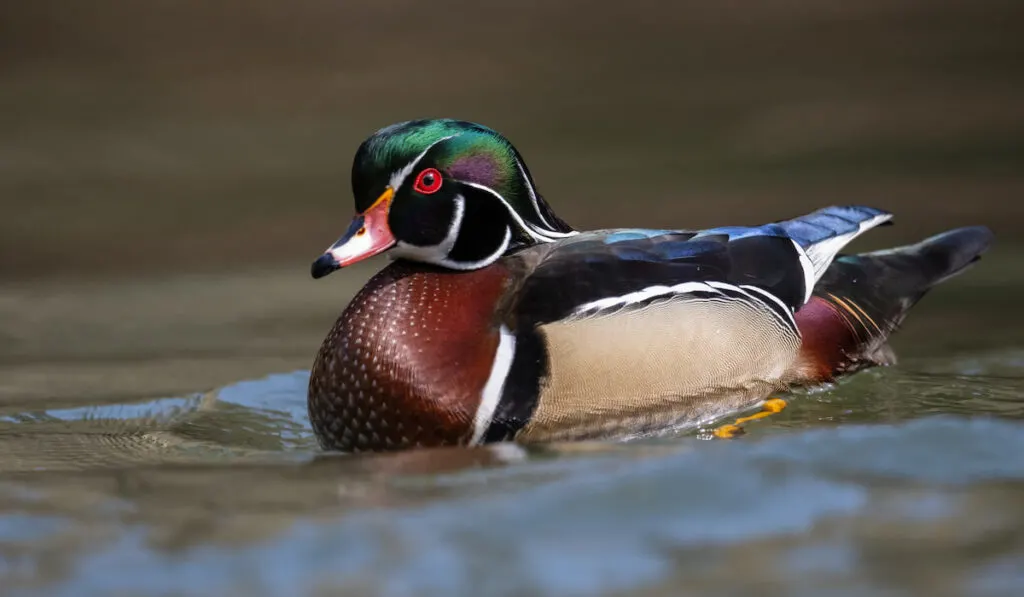
Wood ducks are one of two species of ducks belonging to the genus Aix. They commonly stay in wooded swamps, and they make their nests in tree holes.
They are endowed with strong claws that enable them to perch on trees and grip bark tightly.
Male wood ducks have a complex plumage consisting of chestnut, white, black, and green feathers. They have red bills with yellow, black, and white spots.
Female wood ducks feature grey plumage with a crested head. They have a white tear-drop pattern around their eyes, and the edge of the dark-blue portion of their wings has white strips.
Wood ducks are dabblers, and they feed on plants. They usually pair up early in the year (around January), leaving almost no bird unpaired when spring comes.
One unique feature of the reproductive pattern of wood ducks is that they produce two broods per year. They are the only North American ducks to do this routinely.
Torrent Ducks
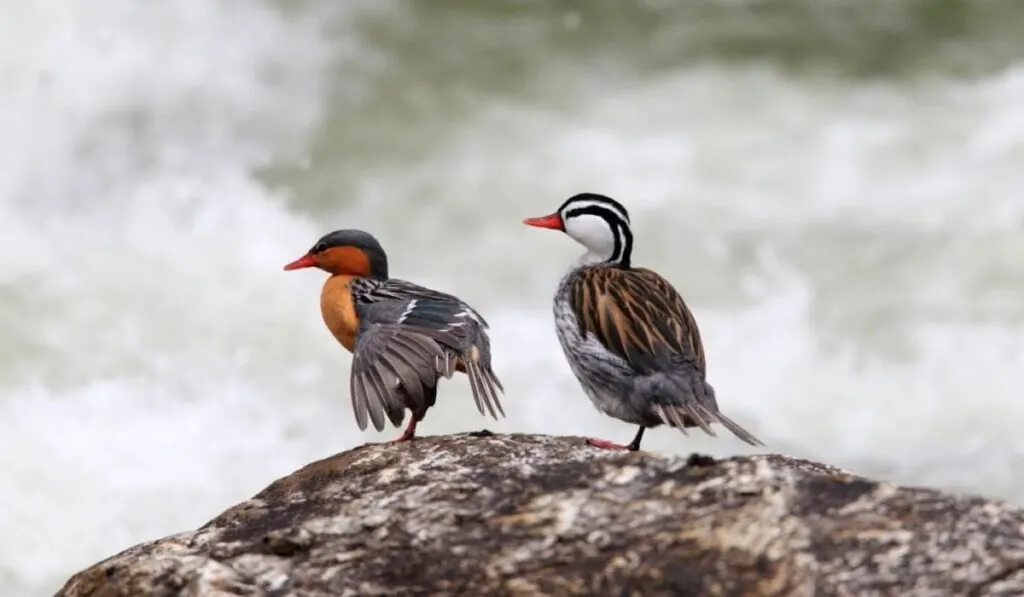
Torrent ducks live around Andean streams and fast rivers in South America. Male and female torrent ducks look quite different, but two features common to both are their stripped backs and bright red beaks. Juveniles will have black bills until they are full grown.
Male torrent ducks usually have plumage ranging between totally black to black with white and rusty-brown strips. They also have white heads with black stripes.
Female torrent ducks, on the other hand, have bright rusty-brown plumage with a grey head.
Torrent ducks are great divers and swimmers with the ability to easily swim through swift moving water. However, they are not so great at flying and will only be in the air for short distances.
They feed on plant matter, larvae, pupae, and small aquatic animals, and their diving skills come into good use when they go hunting.
Black-Bellied Whistling-Ducks
Black-bellied whistling ducks live around marshes; you’ll find them in places like Texas and Louisiana.
Male and female black-bellied whistling-ducks look alike; they have black bellies, grey faces, reddish-pink bills, and white strips. The juveniles also look like the adults, but they have grey bills instead.
As their name says, the black-bellied whistling-ducks whistle to one another and are quite noisy. Their sexual and pairing habits are more like that of swans and geese.
Shelducks
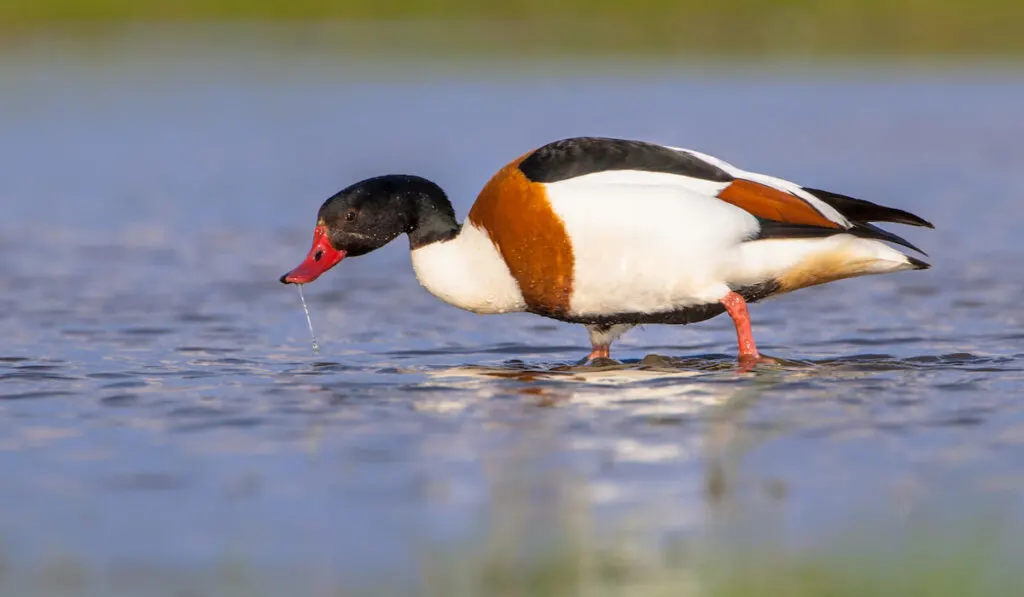
Shelducks are a waterfowl with an average lifespan of 10 years. They are large birds that sometimes grow as big as geese.
Shelducks are white with a dark green head, black feather patches, an orange-brown band around the breast region, and a red bill.
These birds are commonly around coastal regions (especially in winter), freshwater, and wetlands. Sometimes, they nest in tree holes, haystacks, and in old rabbit burrows.
Shelducks mainly feed on small marine invertebrates they find in coastal regions. They eat snails, earthworms, insects, and crustaceans.
Red-Crested Pochards
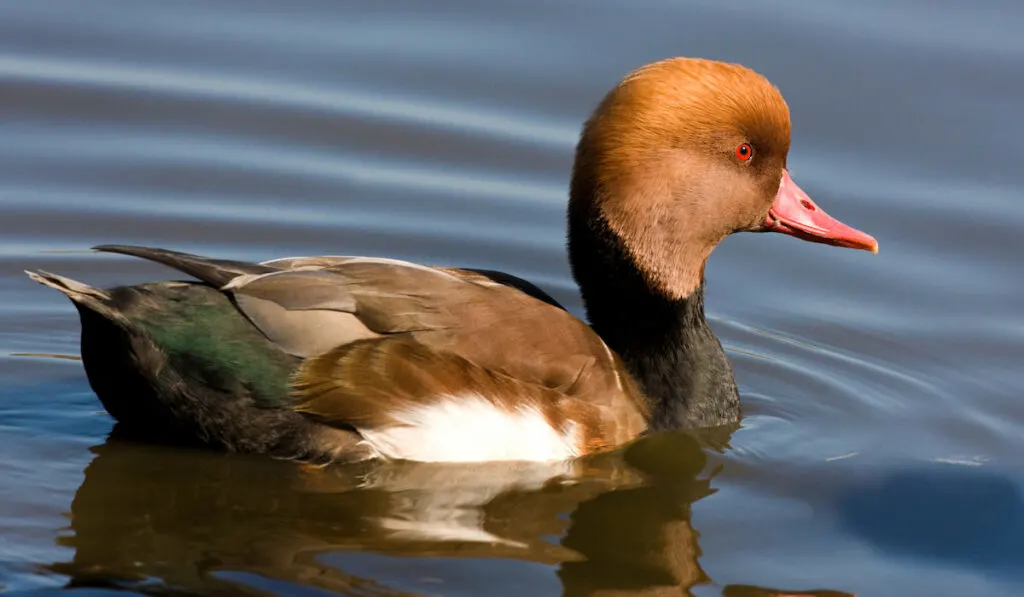
Red-crested pochards are diving ducks and are often considered to be quite beautiful.
In this species, the males and females are distinctive. The male red-crested pochard has a long bright-red bill, rusty head, black breast, and brown wings.
On the other hand, the females have dirty-brown plumage with pale-white cheeks and a rounded brown cap.
Red-crested pochards commonly flock around large lakes and ponds. They prefer water bodies with bordering macrophytes and halophytes.
When in flight, both male and female red-crested pochards reveal their white underwings.
More Birds with Red Beaks
Spur-Winged Geese
Spur-winged geese have some anatomical features that distinguish them from related Anatidae birds. They feature warty red bills, warty legs, warty faces, and long necks.
Spur-winged geese are the largest goose in the world. They are located across wetlands in sub-Saharan Africa. They have a black plumage and white forewings not seen in other waterfowl in their region.
The males are bigger than the females, and they have larger red patches on their faces too. They rarely make calls, but once in a while, they thinly whistle while flying.
Black Swans

It’s not hard to notice the red bill on a large black swan. At rest, their plumage is black, but when in flight, their wings reveal white feathers. Unlike adults, juvenile black swans have dark-grey feathers.
Black swans are commonly seen around rivers, sewage ponds, inland waterways, and coastal lagoons.
Coscoroba Swans
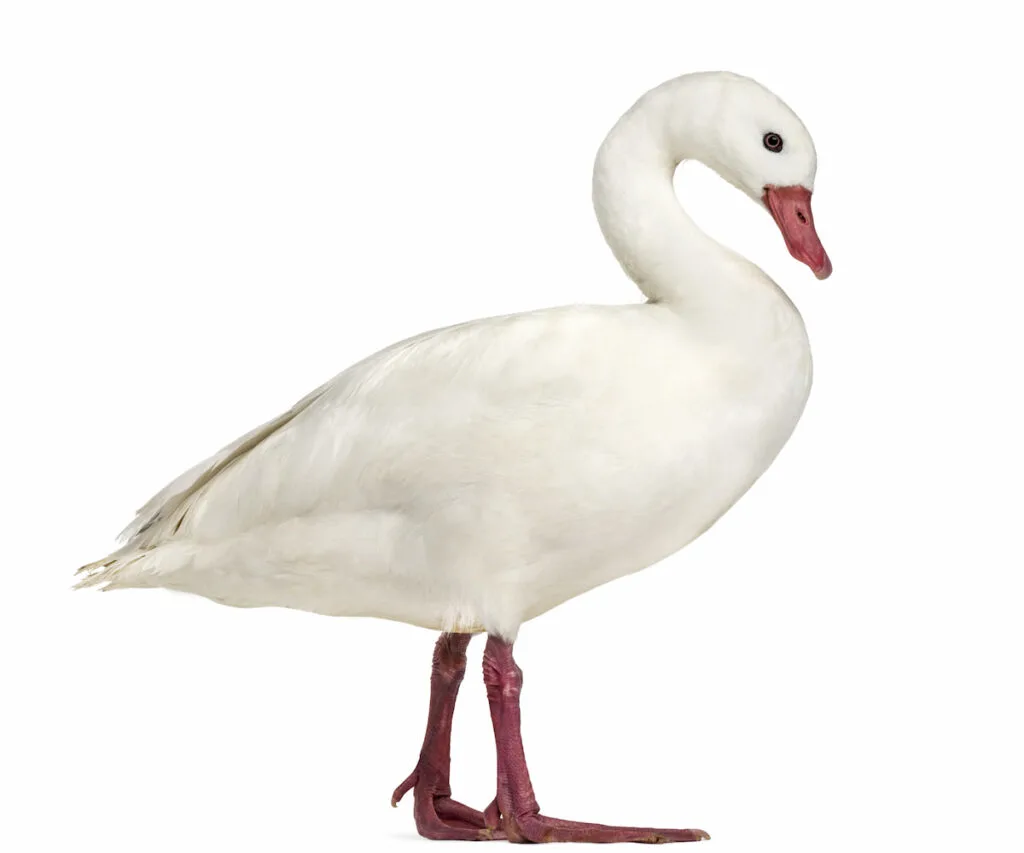
Coscoroba Swans share many similarities with the Cape Barren Goose. They have long necks, bright red beaks, and white plumages.
Coscoroba swans are found in South America around coastal regions and lowlands. They also stay around wetland areas such as lakes, shallow lagoons, and freshwater marshes.
These birds are the smallest of all swans. They have short rounded tails and compared to northern migratory swans, they have broad wings.
Unlike the older coscoroba swans, the juveniles have a grey bill and plumage. However, the grey beaks turn a dull red within five months, and the grey plumage becomes white after eight months.
Resources
- https://www.livingwithbirds.com/tweetapedia/21-facts-on-mandarin-duck
- https://www.wildlifetrusts.org/wildlife-explorer/birds/waterfowl/shelduck
- https://ebird.org/species/rebduc1
- https://www.allaboutbirds.org/guide/King_Eider/overview
- https://www.allaboutbirds.org/guide/King_Eider/id
- https://oceana.org/marine-life/seabirds/king-eider
- https://www.allaboutbirds.org/guide/Muscovy_Duck/overview
- https://ebird.org/species/bratea1
- https://www.allaboutbirds.org/guide/Wood_Duck/overview
- https://ebird.org/species/torduc1
- https://www.beautyofbirds.com/torrentducks.html
- https://www.beautyofbirds.com/spurwingedgeese.html
- https://ebird.org/species/spwgoo1
- https://www.allaboutbirds.org/guide/Black-bellied_Whistling-Duck
- https://ebird.org/species/blkswa
- https://swansg.org/the-swans/coscoroba/
- https://ebird.org/species/recpoc
- https://animaldiversity.org/accounts/Netta_rufina/
